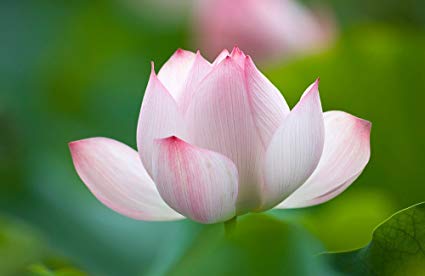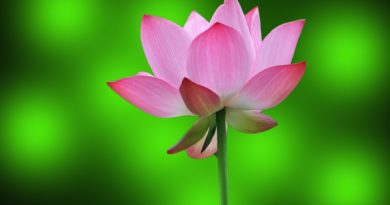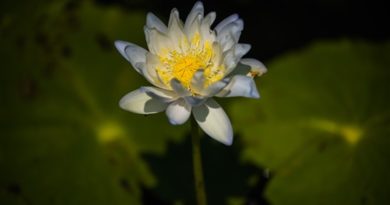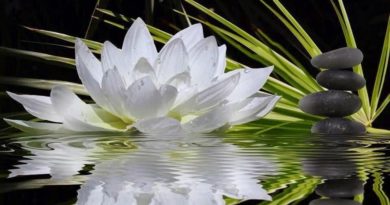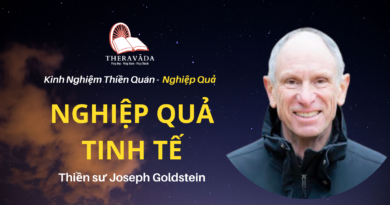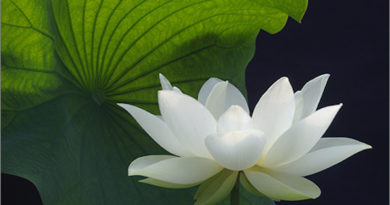SASANA ABROAD – 3. LONDON TO FRANCE & PARIS TO WASHINGTON D.C
MAIN CONTENT
SASANA ABROAD
LONDON TO FRANCE
After the dhamma Discourses and dhamma instruction at the London Vihara for twenty one days, at the invitation of Ven. U Vijaya, Sakyamuni Sasana Yeiktha, France, Sayadaw together with U Pannasiha (London) and Dr. U Mya Aung left by air for France, at 11:30 a.m on June 30th, 1994.
Ven. U Vijaya and the yogi of Sakyamuni met Sayadaw and his team at the Orly Airport, France at 12 noon. Sayadaw and his team were driven to the Sakyamuni Meditation Center established by Vietnamese monk U Vijaya, at Montbeon village. There, Sayadaw conducted a six-day retreat beginning from July 1st.
At the discussion period, Susanta, a Vietnamese nun told Sayadaw, “While contemplating vipassana, I observe all kinds of sufferings in my body. My observation is very bad and I abhor my body and was disgusted with it.” Sayadaw’s answer was: At this stage of nana yogi may not be happy with the contemplation, however according to the stage of insight it is regarded as good or improvement in dhamma. At this bad stage of insight it is natural to encounter bad sufferings. To be entirely disgusted with the body is very good in the dhamma sense. “To see the body as despicable” is “viraga” in Pali, that means to be totally detached. One is liberated from sufferings (vimutta) when he is detached. The Atthakatha masters rendered viraga as Magga and vimutta as Phala and Nibbana. The detachment of the body, accordingly, is the cause for the attainment of Magga, Phala and Nibbana.
Two Questions
On July 2nd, 8:00 a.m to 10:00 a.m was the discussion period. The yogis and devotees of Sakyamuni held a ceremony to pay obeisance to Sayadaw after breakfast on July 3rd, Nguen Hue In, a Vietnamese yogi who had spent a month to meditate at Yangon and ten days in France, respectfully requested Sayadaw to allow her to put up a question “I am practising vipassana meditation, will I have a chance to gain noble dhamma in this very life?” Sayadaw answered briefly, “Since yogi is complete with the four conditions which are hard to attain, you can gain the noble dhamma.” Afterwards, Sayadaw explained the four conditions which the questioner and the listeners of the dhamma, have in them.
(1) Though it is hard to be alive, you are living now.
(2) Though it is hard to be a human being, you are now human beings.
(3) Though it is hard to listen to the noble dhamma you are now listening to it.
(4) Though it is hard to be present during the sasana, you are enjoying it.
The second question was from a Vietnamese yogi of France. “To gain dhamma, are there any other conditions besides these four?”
Sayadaw’s answer: “Yes, there are other two conditions”
(a) The satipatthana vipassana instructors and teachers must have the ability to teach the correct method to attain Magga, Phala and Nibbana.
(b) Those practising satipatthana vipassana must contemplate diligently till they attain Magga, Phala and Nibbana.
If you are complete with these two conditions you may gain the aspired dhamma. On the other hand, if one of these two conditions is not fulfilled, you may not gain the dhamma.
PARIS TO WASHINGTON D.C
At the end of the six-day retreat at Sakyamuni Meditation Centre, France, Sayadaw together with U Pannasiha (London), Dr. U Mya Aung and Sakyamuni U Vijaya left the De Gaulle Airport, France, for Washington D.C. at 8:00 a.m, July 7th, 1994. After a stop over at London, left at 12 noon and arrived at Washington D.C. at 5:00 p.m. Sayadaw U Kelasa, Mg Tun Lin and Mg Phyo Win were waiting at the airport.
In Washington, Sayadaw resided at Sayadaw U Kelasa’s Mingalarama Monastery together with Chan Myay Sayadaw and Bombay Sayadaw. On July 9th, 1994, Sayadaw gave a dhamma talk from 1:00 p.m to 2:00 p.m on “Four Conditions which are hard to gain”, About twenty Myanmar devotees listened to the dhamma respectfully. On July 10th, at 1:00 p.m. Sayadaw discoursed for one hour on the four conditions for sotapanna and twenty four types of sotaponna to a group of about twenty Myanmar devotees.
Twenty four Types of Sotapanna
Sayadaw explained briefly under three headings as follows.
1. Three sotapanna according to the number of existence.
2. Two sotapannna according to predominating factors.
3. Four sotapanna according to the ways of practice.
Multiply the three sotapanna of No. (1), by the two sotapanna of No. (2) you get six sotapannna, again multiply these six sotapanna with the four sotapanna of No. (3) you get twenty four types of sotapanna. Sayadaw went on to explain the four sotapanna according to the ways of practice as follows.
When yogis practice vipassana meditation to be a Sotapanna, (1) Some have difficulties in practice and are also slow to attain dhamma.
(2) Some have difficulties in practice, however they easily gain dhamma.
(3) Some practise with no difficulties, nevertheless they are slow in gaining dhamma.
(4) Some practise without difficulties and also easily gain dhamma.
Three ways to overcome dukkha vedana
Among these four types, yogis who have difficulties and are also slow in attaining dhamma, should contemplate dukkha vedana so that pain may be experienced physically but not mentally. There are three ways of contemplating in order to overcome the dukkha vedana.
(1) Contemplation with the intention to eliminate the dukkha vedana.
(2) Contemplation with the intention to eradicate the dukkha vedana at once, that is contemplation with a harsh mind.
(3) Contemplation with the intention to discern the nature of the dukkha vedana.
(1) The contemplation with the purpose of eliminating the dukkha vedana, as a matter of fact, is the desire to be at ease or relieve from the pain. Thus there arises lobha. A person contemplates to lessen or to eradicate lobha, however, now he is developing lobha or desire to be happy. Since there arises lobha kilesa in between notings, he does not perceive dhamma. Thereupon the progress in dhamma is slackened and the attainment of dhamma is slow. That is the reason why this way of contemplating the dukkha vedana is not to be practised.
(2) The contemplation to eradicate the dukkha vedana at once involves a harsh mind. A harsh mind means dosa. Vipassana contemplation is to prohibit dosa, however, there arises kilesa (dosa) in between notings. In such a condition, it is difficult to see dhamma. If it is so, the progress in dhamma is slow and accordingly the attainment of dhamma is not to be expected. This method of eradicating the dukkha vedana also is not to be practised.
(3) The contemplation to discern the nature of the dukkha vedana is the correct method. In vipassana meditation first and foremost, it is required to discern the nature or the phenomena.
Then only the process of becoming and dissolution will be apparent. The knowledge of the process of becoming and dissolution fosters the perception of impermanence, suffering and non-self. The realization of the happiness of Nibbana is inevitable only when one has a perfect perception of the three characteristics.
Lord Buddha had admonished that one must practise so that he will suffer physically but not mentally upon encountering the dukkha vedana.
Once the Buddha was residing in a forest near Susumaragira town in the Bhagga State. At the same time Nakulapita, a rich man lived in that town. The Buddha and the rich man were father and son for the past five hundred existences. The rich man was too old and stricken with various diseases. Reflecting that this may be the last time he could see the Buddha he went to the Buddha expecting to hear a dhamma sermon, “The Exalted one, I am too old and weak, besides I suffer various diseases. I may not he strong enough to come and see you again. Therefore please bless me with a sermon.”
The Buddha said, “Oh rich man, there is no one who is not stricken with disease. Whosoever said that he has no disease must be stupid and naive.” Then He continued, “Oh rich man practise not to be mentally, but physically painful.” The rich man went to Ashin Sariputta and told him what the Buddha had said. Thereupon Ashin Sariputta preached the Dhamma on physically as well as mentally painful and physically painful but not mentally.
Whosoever treat nama and rupa as a whole without perceiving them separately will suffer both physically and mentally. Whosoever could observe nama and rupa separately suffer only physical not mental pain.
When unbearable dukkha vedanas arise while practising vipassana meditation first and foremost you must bear in mind to be patient. There should not be anxieties such as. “Am I going to be painful like this for the whole hour.” You should ponder, “Vedana naturally is painful. To note is my only duty.” Yogi should relax both physically and mentally, instead of getting stiff when it becomes more painful. After relaxing both body and mind, he must fix his mind directly on the Vedana and observe the intensity of Vedana, such as “is the pain only in the flesh or skin? Is it from the nerve, bone, bone-marrow”, “by noting” painful”, “painful. After four or five attentive notings the yogi will experience the increasing pain. However it will decrease again after reaching the maximum. This awareness of increasing and decreasing intensity of pain is the perception of the nature of pain.
The concentration becomes strong by continuous noting and the increasing pain with each noting is more vivid. Moreover, after reaching the maximum, the pain, somehow or other, decreases with each noting. In this way the nature of pain (Vedana) is more lucid to the yogi. With successive noting the concentration is more strengthened and mature. Thereupon the yogi will find that Vedana arises and disappears by each noting. The arising is becoming and the disappearing is dissolution. When this process of be coming and dissolution is more apparent, the noting of it, overwhelms the Vedana. This is how Vedana is over come by the noting mind.
The concentration is more and more strengthened by repetitive noting and at the Bhanga Nana Stage, on noting “painful”, the becoming is not vivid but only the dissolution. By virtue of the strong concentration, not only the vedana but also the noting mind dissolves when noted as “painful”. Since the noting mind has overwhelmed the pain, the yogi suffers only physically but not mentally. The listeners of the dhamma are mostly vipassana yogi, hence you may have dhamma friends they would want some dhamma present. Upon their request just give this dhamma present, “Dear dhamma friend, do not let yourself suffer mentally, but only physically. You should practise not to suffer mentally.”
Let us recite this motto as a dhamma gift.
Motto: To be painful physically but not mentally. Practise Satipatthana.
The listeners of the dhamma talk were so much impressed with the instruction on how to observe vedana, that they telephoned Daw Khin Khin Gyi, the sponsor of Sayadaw’s trip and expressed so.
WASHINGTON D.C. TO NEW YORK
On July 11th, 1994 at 2:00 p.m. accompanied by Dr. U Mya Aung and U Tun Kyi. Sayadaw left for New York, after two days dhamma talk at the Mingalarama monastery, Washington D.C. Sayadaw and his team arrived at the New York airport and were met by U Indaka of Lokachantha Pagoda Monastery, U Mahosadha Pandita, U Abhayalankara and the monastery donor U Han Kyu. Sayadaw gave dhamma talks to the earnest and attentive listeners on: –
July 12th, 8 p.m. to 10 p.m. Four Dhamma which are difficult to attain, to about 20 listeners.
July 13rd, 8 p.m. to 9:30 p.m. Four Conditions of Sotapanna and twenty four Types of Sotapanna, to about 25 listeners
July 14th, 8 p.m. to 9:30 p.m Anuggahita Sutta, to about 25 listeners. Dr. Myat Myat Mun, (daughter of U Khwe Nyi and Daw Pherik Lwan of Yangon), Dr. Ma Su Thwe of Yangon and Dr. Ma Cho Cho, from various cities of U.S.A. were among the dhamma listeners
The Anuggahita Sutta
Today is the seventh day of the new moon of Waso, 1356 (M.E) and the Anuggahita Sutta” from Anguttara Pali will be delivered. Anuggahita means to support the vipassana right view. The listeners of this sermon, as Buddhists, will one day practise vipassana meditation. The Buddha had admonished that vipassana right view should be supported by five dhammas while practising the vipassana meditation to attain Magga and phala. The five dhammas to support the vipassana right belief— (1) Silanuggahita (2) Sutanuggahita (3) Sakaccanuggahita (4) Samathanuggahita (5) Vipassana nuggahita supporting by sila. supporting by knowledge through listening to dhamma. supporting by dhamma discussion. supporting by samatha meditation supporting by vipassana meditation
At this point the Attakatha masters drew an analogy of planting a young tree and how the aspiration of Magga and Phala support the vipassana right view by the five supporting dhammas. In order to let the young tree grow strongly and bear desirable flowers and fruits the planters of the tree require to support the tree by:
(1) Fencing
(2) Watering
(3) Weeding
(4) Removing the worms and insects
(5) Clearing the webs.
Let us recite the following motto:
Motto:
If you plant a young tree,
water and fence it for security.
To clear rotten roots and weeds is a sure need.
Remove insects and their webs
So that it can grow best.
1. The planters of young trees must fence them to keep away the cattle and other animals. Similarly whosoever practises vipassana meditation must fence the vipassana right belief by sila so that it may be free from danger. If the young trees are not fenced around, cattle and other animals can destroy them. In the same manner, if not fenced around by sila the vipassana right view can be endangered by lobha, dosa and moha, the physical and verbal causes leading to the commitment of the heinous “Actions with Immediate Destiny”.
Motto: Sila is likened to a fence around the young tree.
2. The planters of young trees must water them so that they will not wither but develop well. Likewise the mediators should support the vipassana right belief by the knowledge gained through listening to the dhamma. The young plants will wither and die if not watered, so also if the meditators do not support the vipassana right belief by listening to the dhamma they may not be able to note well. They will be disheartened when there is no progress or improvement in Dhamma. It is, therefore, important to support the vipassana right belief by the knowledge gained through listening to dhamma.
Motto: Knowledge is similar to watering the tree.
3. The planters of young trees have to clear the old rotten roots and cut away the grass and weeds. So also the meditators have to support the vipassana right belief by discussing dhamma. If the rotten old roots and weeds around the trees are not cut and cleared the trees will not thrive and grow well. In the same way if the meditators do not dispel their doubts or correct their wrong practice by discussion of dhamma, they will slack in discerning the dhamma followed by slow improvement and uncertain attainment of noble dhamma.
4. As the planters of young trees have to clear the insects on the trees, the meditators likewise have to repel the frequent arising of kilesa such as lobha, dosa and moha in their conscious mind by samatha meditation. The insects can destroy the trees if the latter is not cleared of the insects. In the same way if the repetitive arising kilesa such as lobha, dosa and moha were not dispelled by samatha meditation, the vipassana right view can be destroyed. That is the reason why the vipassana right view must be supported by samatha meditation.
Motto: Samatha is likened to clearing of insects.
Nowadays the vipassana meditators could not accomplish the jhana absorption which annihilates kilesa (likened to insects). They should develop the preparatory moment by reflecting the four self-guardian dhammas or samatha meditation, namely: –
(1) Buddhanussati meditation-reflection upon the attributes of the Buddha.
(2) Metta meditation – loving kindness meditation.
(3) Asubha meditation – meditation of impurities of body.
(4) Maranasati meditation – reflection of death.
Buddhanussati meditation especially dispels moha whereas metta meditation dispels dosa. Asubha meditation can expel lobha and the reflection of death repeatedly expels conceit (mana.)
Buddhanussati meditation is the repeated mindful reflection of Buddha’s attributes. Buddha’s attributes are incalculable so also are there power and influence. The Atthakatha masters explained that whosoever reflects on the uncountable attributes of the Exalted one will enjoy the uncountable benefits. The reflection of each of the nine attributes yields the benefits according to the meaning of the great virtues.
When in danger reflect Arahan Attribute, “Arahan—The Exalted one, indeed annihilates the kilesa (impurities)” By reflecting this the dangers and harms can be expelled.
Motto: To be free from danger must ponder on “Arahan”.
When sitting for very difficult examinations or discerning things which are hard to be understood, reflect, “Sammasambuddho – Lord Buddha, indeed, is omniscient” Thus reflecting, the difficult things will be easily discerned.
Motto: To understand profoundly must ponder on ‘Sammasambuddho”.
When you want to be complete with sila, concentration and wisdom or to quickly gain dhamma, to rapidly improve it, reflect, Vijjacarana sampanno— Indeed, the Buddha has accomplished the three-fold knowledge, the eight kinds of knowledge and the fifteen kinds of conduct”. Thus reflecting the practice of sila, concentration and wisdom will be completed.
Motto: To be complete with training must ponder on wisdom (Vijja)
When you are about to start on a journey or during the journey, to prevent danger and to reach the destination safely, reflect. Sugato— Truely, the Exalted One has journeyed to nibbana. “By reflecting Sugato attribute, you can travel harmlessly and happily, and safely arrive at the destination.
Motto: On taking a journey must ponder upon “Sugato.”
To be successful at the interview or in the discussion of important matters, reflect Sugato – in fact, Lord Buddha is the speaker of right words.”
So reflecting Sugato you can achieve your project with no difficulty.
Motto: To speak and achieve must ponder on Sugato.”
To discuss or investigate the worldly, affairs such as social and business problems or when searching for a lost person or property, reflect, “Lokavidu—the Buddha, indeed, is the knower of the three worlds”. Thus reflecting you can discern matters easily.
Motto: To be well versed in the world ponder on “Lokavidu.”
When to chastise the untamed people, reflect, “Annuttaropurisa Dhammasarathi—Buddha, truly is an incomparable charioteer for the taming of untamed men, devas and animals to be tamed” This reflection will yield the benefit of uncivilized persons to become civilized when chastised.
Motto: Wishing to chastise must ponder on “Anuttaro”.
Teachers while imparting knowledge, should reflect. “Satta devamanussanam – the Enlightened one, indeed is the Teacher of devas and men.” This will make the students learn easily and quickly.
Motto: When imparting knowledge must ponder on Sattadevamanussanam.
If you are learning something, reflect “Buddho— ‘Buddho, indeed is the Knower of the Four Noble Truths.” Reflecting thus you can learn very quickly and easily.
Motto: Wishing to learn trade must ponder on Buddho.
To fulfil one’s benefit as well as of others reflect. “Bhagava—Lord Buddha, truly is entirely endowed with the six great qualities of glory”. Thereupon one’s own as well as other’s wishes are fulfilled.
Motto: Wishing to fulfil benefits reflect Bhagava.
During the explanation of the Buddha’s attributes some of the dhamma listeners took down notes.
5. The planters of young trees’ have to remove the webs at the tip of the trees, so also the vipassana meditators must support the vipassana right view by eradicating the arammananussaya (inherent tendency for defilements due to sensual objects.) by means of ultra-strong (balava) vipassana. This inherent tendency develops when six sense objects come into contact with the six sense-doors.
The six sense objects, namely sight, sound, odour, taste, touch and thought come into contact daily with the six sense-organs, namely eye, ear, nose, tongue, body and consciousness, just like the webs entangling tips of the young trees. With the entangled webs the young tree cannot thrive and grow well. In the same manner the vipassana right belief cannot progress if the arammananussaya kilesa, likened to the webs, are not removed by ultra strong vipassana observation. When the sense objects come into contact with the sense doors, they must be noted right away as, “seeing”, “hearing”, “smelling”, “eating”, “touching”, and “thinking”.
Motto: Vipassana is likened to the removal of webs.
After listening to the “Anuggahita Sutta”, may the vipassana meditators, sons and daughters of good parentage, be able to support the vipassana right view developed in their disposition by
– fencing it with sila.
– watering it with knowledge
– weeding by means of discussing dhamma
– taking away the kilesa insects by means of samatha
– removing the anussaya insects webs by ultra-strong (balava) vipassana.
May you, accordingly, realise your aspired noble magga and phala immediately with easy practice.

